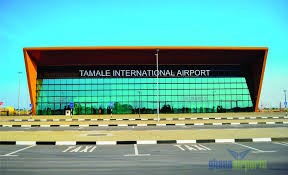In the realm of infrastructure development, the establishment of airports often symbolizes progress and prosperity for regions seeking growth and economic development. However, amidst the aspirations for modernity and enhanced accessibility, the looming shadow of financial viability often raises pertinent questions. Recently, the Auditor General of Ghana shed light on the troubling trend of airports in the country registering losses. This revelation not only underscores the precarious financial landscape of such projects but also calls into question the wisdom of investing in new airport infrastructure, particularly in regions with limited demand and shaky economic justification.
Data sourced from the latest Auditor General’s Report on the accounts of public boards, corporations and other statutory institutions in 2023 showed that in 2022, airports in Ghana generated a combined revenue of GH¢13.13 million from their operations as against an expenditure of GH¢39.14 million.
The deficit of GH¢26.01 million has prompted a re-evaluation of strategies to optimize regional airport development and maximize economic benefits.
The regional airports are the Kumasi Airport, now Prempeh I International Airport in the Ashanti Region, the Tamale International Airport in the Northern Region, the Wa Airport in the Upper West Region, the Sunyani Airport in the Bono Region, and the Ho Airport in the Volta Region.
A further breakdown of the data indicated that the Kumasi Airport injected GH¢15.68 million as expenditure but generated GH¢8.22 million in revenue. Tamale Airport on the other hand raked in GH¢4.74 million in revenue but invested a huge sum of GH¢15.41 million as expenditure, while Sunyani Airport accrued GH¢95,626.58 in revenue after an expenditure of GH¢4.53 million.
Surprisingly, the Ho Airport, which generated no revenue, had an expenditure of GH¢1.38 million in its books in 2022, while the Wa Airport generated GH¢77,250.48 as revenue and invested GH¢2.15 million in its operations.
The proposal to construct an airport in the Upper East region of Ghana stands as a prime example of a project fraught with financial uncertainty and questionable benefits. While the allure of infrastructure development is undeniable, a critical examination compels stakeholders to reassess the wisdom of such an endeavor. Speaking at the launch of the 2024 manifesto of the New Patriotic Party (NPP), Bawumia emphasized the need for improved infrastructure to boost regional development and enhance connectivity across the country.
Dr Bawumia further indicated that his government will commence the development of the Cape Coast Airport for which funding has been secured under the Korean $2 billion facility, which will serve both the Central and Western Regions, and, in collaboration with the private sector build an airport in the Upper East Region.
The Auditor General’s report serves as a sobering reminder of the harsh realities that often accompany ambitious projects, especially in a landscape where fiscal prudence is paramount.
One of the key arguments against the construction of an airport in the Upper East region stems from the pragmatic alternative of prioritizing the dualization of the Tamale-Bolgatanga highway. This strategic move would not only enhance connectivity and reduce travel times between the two major cities but also have a more tangible and immediate impact on the region’s infrastructure landscape. By opting for this more practical and economically viable option, resources could be directed towards improving existing transportation networks, benefiting a larger segment of the population and stimulating economic activity more sustainably.
Moreover, the economic rationale behind the proposed airport project comes into sharper focus when considering the underwhelming air passenger traffic in the region, particularly in Tamale. Extending this reality to Bolgatanga raises serious doubts about the feasibility and sustainability of an airport in a location where demand is lackluster at best. Investing in an airport infrastructure with limited prospects for profitability not only risks draining public resources but also fails to address the pressing needs of the local population and the region as a whole.
Critics argue that the push for an airport in the Upper East region may be driven more by political expediency than genuine economic necessity. In a landscape where optics and political mileage often overshadow pragmatic decision-making, the construction of an airport could be viewed as a symbolic gesture rather than a well-thought-out investment in the region’s long-term
Author: Ibrahim Angaangmeni Alhassan
Email: ibrahimangaangmenialhassan@gmail.com


